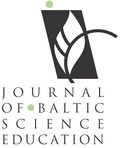APPLICATION OF A QUESTIONNAIRE TO DESCRIBE TEACHER COMMUNICATION BEHAVIOUR AND ITS ASSOCIATION WITH STUDENTS IN SCIENCE IN TURKEY
| Title | APPLICATION OF A QUESTIONNAIRE TO DESCRIBE TEACHER COMMUNICATION BEHAVIOUR AND ITS ASSOCIATION WITH STUDENTS IN SCIENCE IN TURKEY |
| Publication Type | Journal Article |
| Year of Publication | 2004 |
| Authors | Özay, E, Kaya, E, Sezek, F |
| Journal | Journal of Baltic Science Education |
| Volume | 3 |
| Issue | 2 |
| Start Page | 15-21 |
| Date Published | March/2003 |
| Type of Article | Original article |
| ISSN | 1648-3898 |
| Keywords | sex differences, students’ perceptions, subject differences, teacher communication |
| Abstract | Teachers contribute enormously to a positive social climate at science classes, particularly through their communication with students. In the study described in this article, a questionnaire (The Teacher Communication Behaviour Questionnaire (TCBQ)) developed by She and Fisher (2000) was applied. TCBQ can be used to assess students' perceptions of science teachers' interpersonal communication behaviours in their classroom learning environments. TCBQ has five scales: Challenging, Encouragement and Praise, Non-Verbal Support, Understanding and Friendly, and Controlling. The TCBQ was applied with a large sample of secondary science students in Turkey. Girls perceived their teachers as more understanding and friendly, encouragement and praise than did boys, and teachers in biological and chemistry science classrooms exhibited more favourable behaviour toward their students than did those in physical science classrooms. |
| URL | http://oaji.net/articles/2016/987-1482420157.pdf |
| Refereed Designation | Refereed |
| Full Text |
